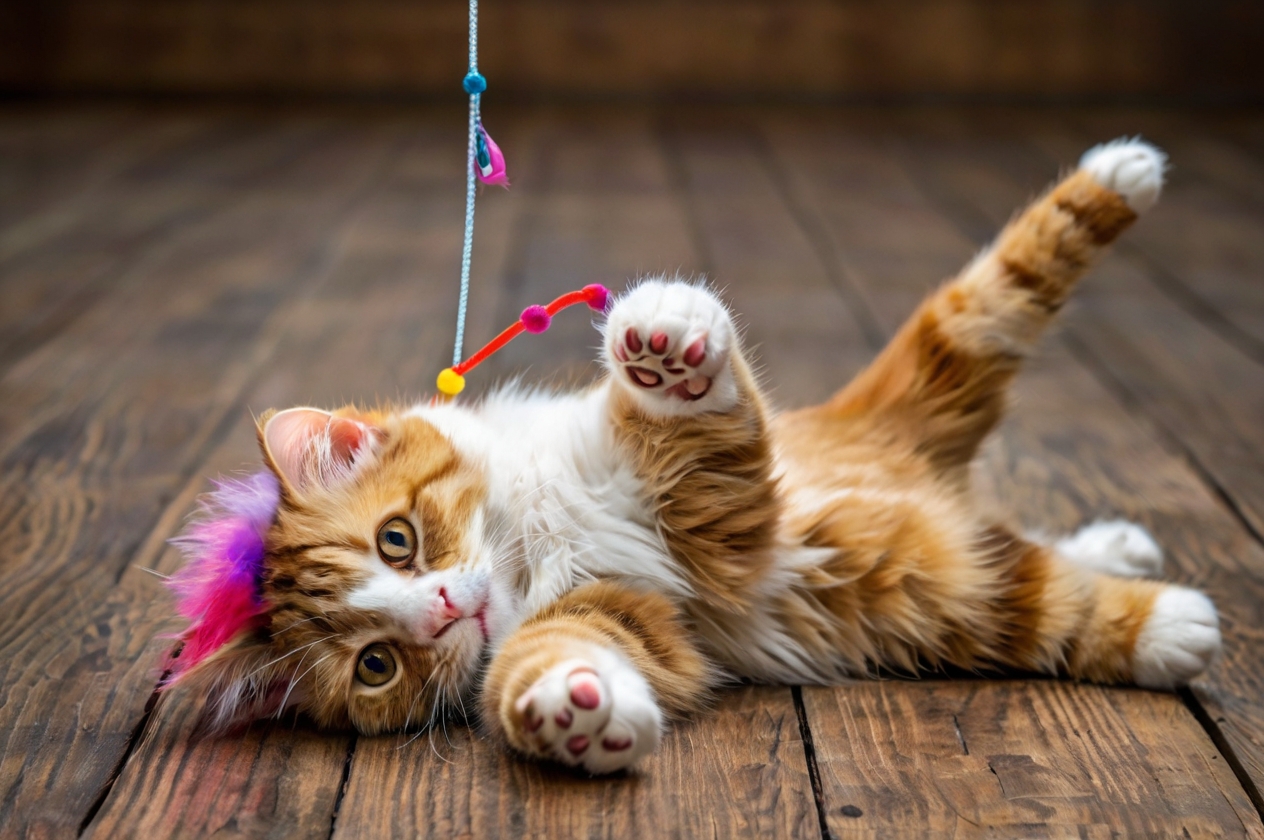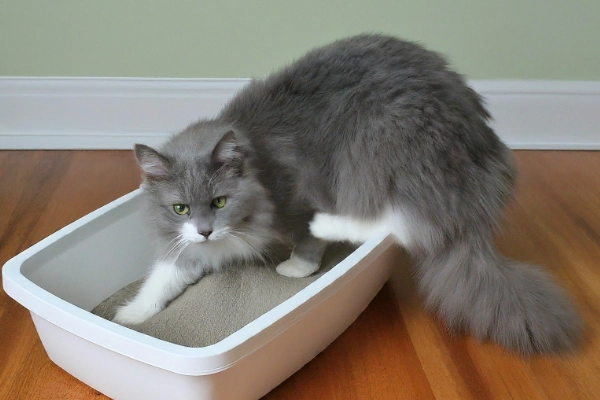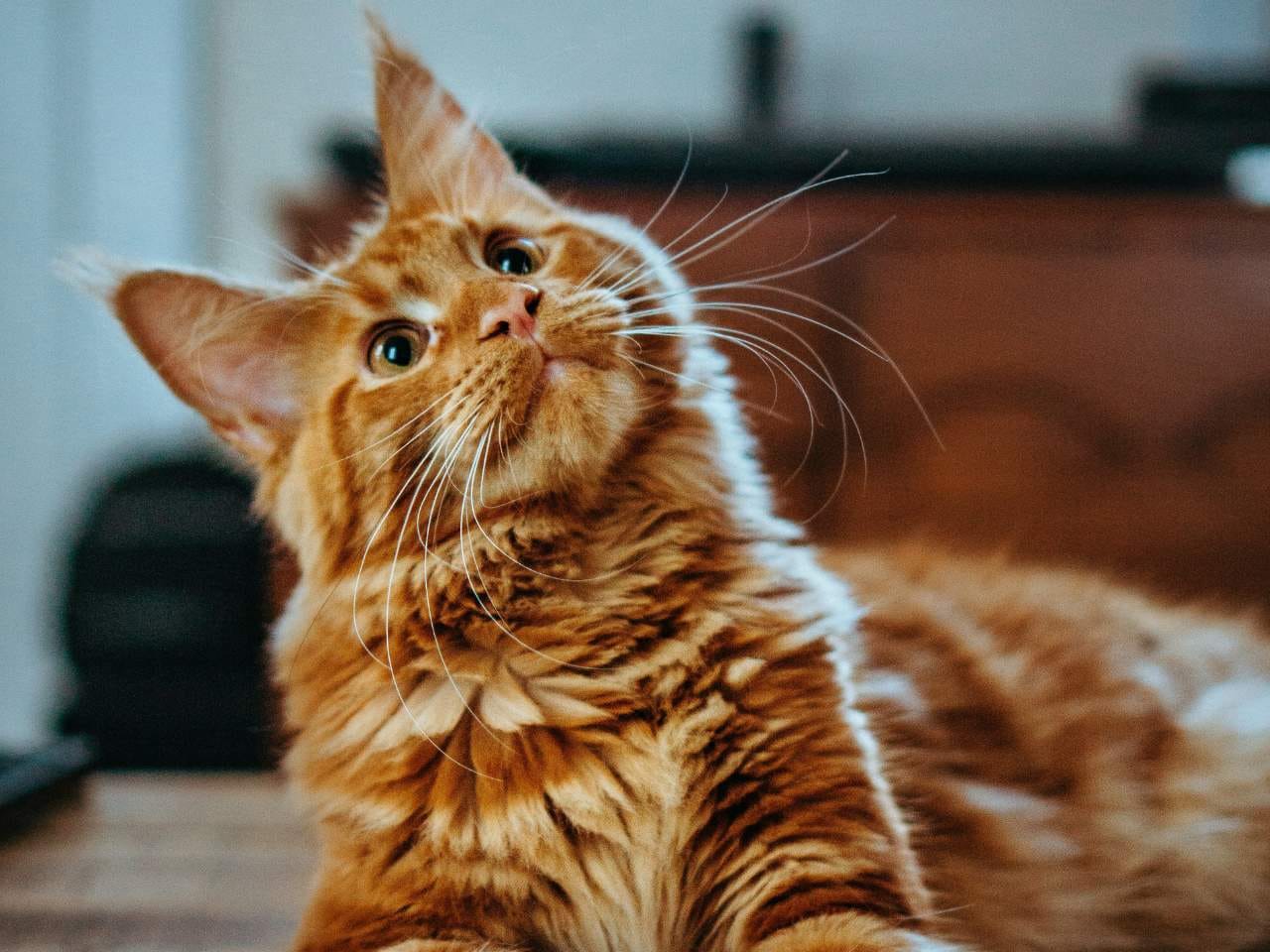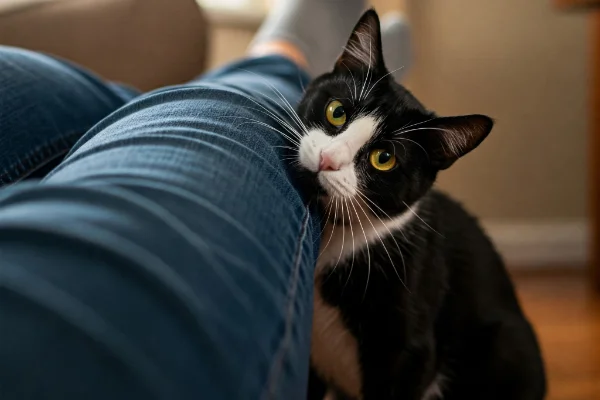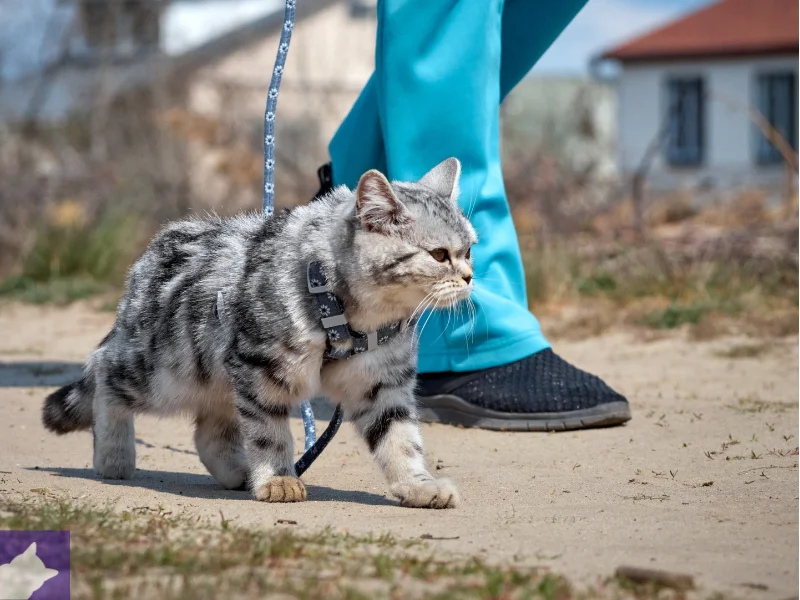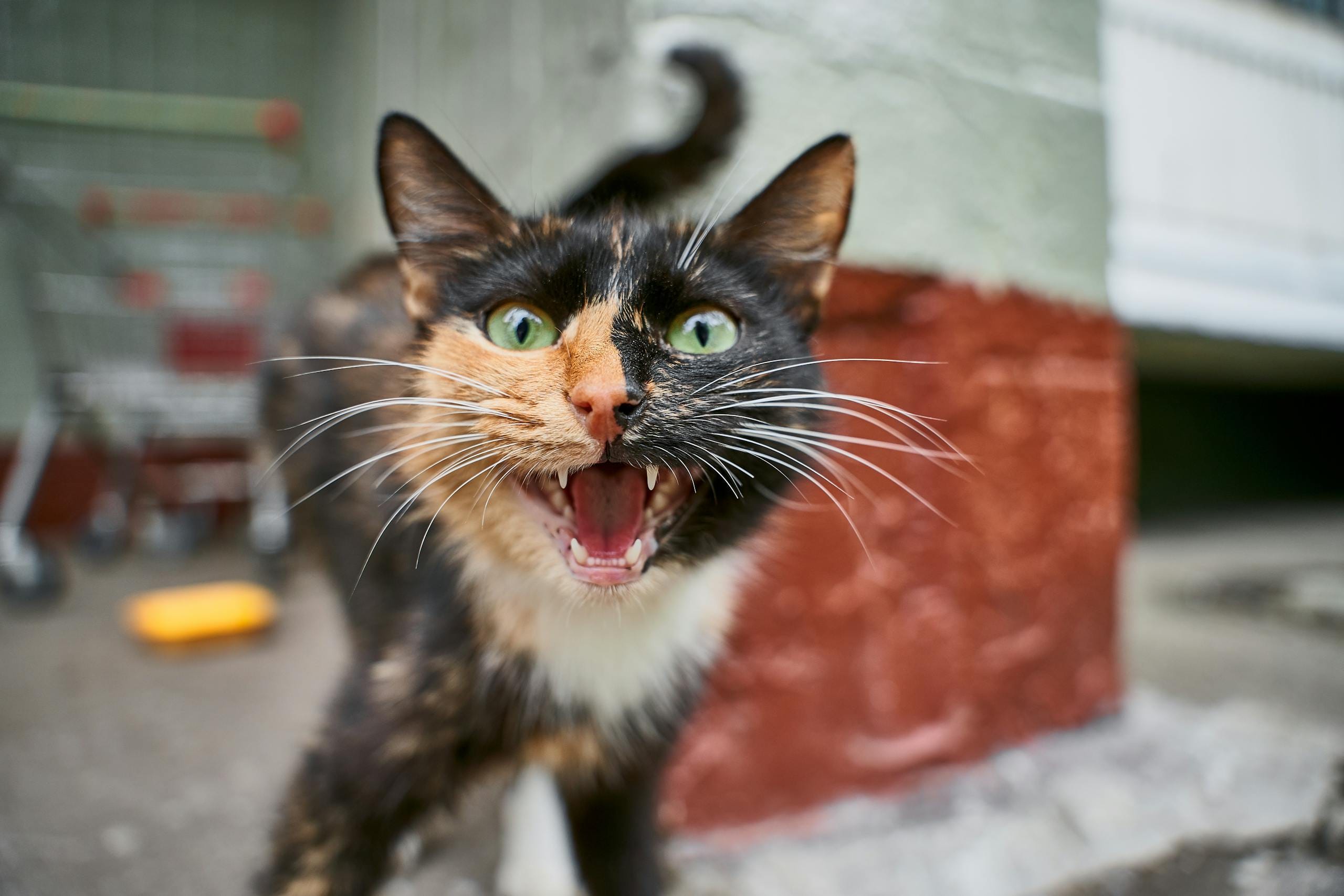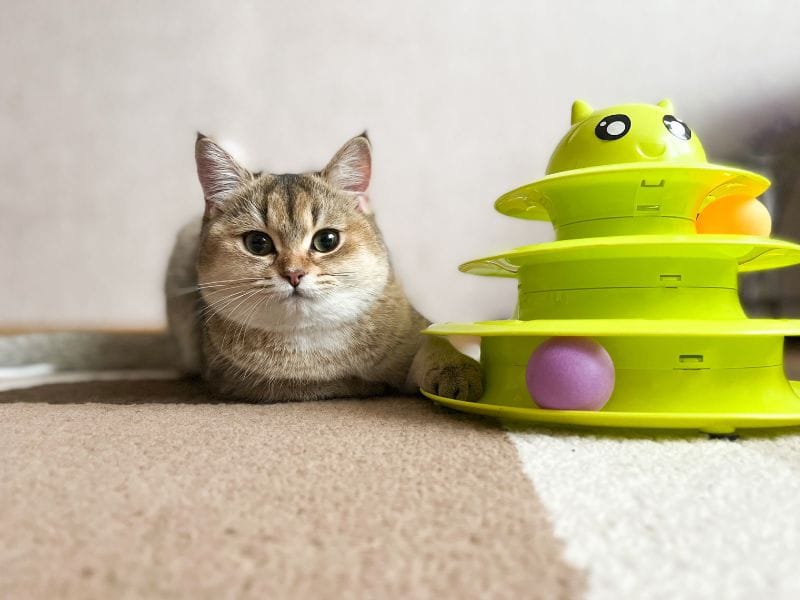
We may earn a commission when you purchase via our links at no extra cost to you.
We only share resources that meet our high standards
Introduction
If you’ve recently brought a cat home, you might notice periods where they lounge, stare out the window, or seem restless with nothing to do. Indoor cats especially are prone to boredom, which can lead to unwanted behavior (like scratching furniture, over-grooming, or being lethargic).
This article will help you understand what interactive toys are, why they matter, and how to choose ones that will truly engage your cat. You’ll also get five interactive cat toys to reduce boredom (available on Amazon) plus practical tips to make the most of them. No fancy gear or experience needed, just the desire to make your cat’s life more fun.
What Makes a Toy Interactive & Why It’s Important
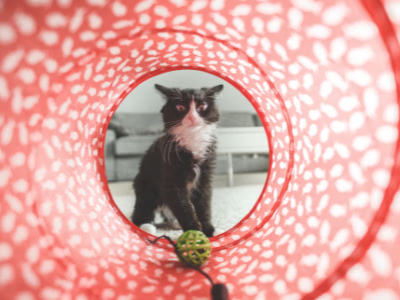
- Definition: An interactive cat toy is one that encourages the cat to think, move, or hunt, not just bat something around passively. It might move on its own (motorised, sensor-based), or require the cat to solve a puzzle, chase a moving target, etc.
- Benefits
- Mental stimulation: Helps prevent cats boredom, keeps the cat’s brain active.
- Physical exercise: Indoor cats often miss out on natural activity; interactive toys encourage running, jumping, pouncing.
- Behavioral benefits: Reduces stress, anxiety, destructive behaviors when the cat has an outlet for its prey instincts.
- Health benefits: Helps with weight management, maintaining mobility/hunting reflexes etc.
How to Choose the Right Interactive Toy
Here are criteria to think about, especially if you’re a beginner:
- Age / stage: Kittens have more energy and need different stimulation vs older cats.
- Energy level: Some cats are naturally calm; others are very active. Too much stimulation can stress a shy cat; too little will bore a hyper one.
- Material & safety: Non-toxic materials; avoid small parts that can be swallowed; safe battery / electrical design.
- Noise & movement: Some cats are scared of loud or unpredictable motion; others love it.
- Cleaning / durability: Toys that are easy to clean and built to last are better value.
- Variety & rotation: Even good toys get boring if always the same. Rotating between a few helps maintain interest.
Top 5 Recommendation Interactive Cat Toys to Reduce Boredom
1. Cheerble Smart Ball Interactive Cat Toy

Key Features
A self-rolling ball with built-in motion sensors and LED lights. It changes direction when it hits objects, offering unpredictable motion. One model includes normal, gentle, and passive modes.
Best For
Great for cats who like chasing moving targets; helps with chasing instincts. Works well on hard floors. Very good as a solo-play toy.
Things to Check
Might be less effective on thick carpets; battery life should be considered; some cats may ignore it if they dislike light or motion.
2. Cat Amazing MEGA Treat Puzzle Box

Key Features
A maze / puzzle feeder with many sections; treats are hidden and cats have to dig, paw, or explore holes. It slows eating and adds mental challenge.
Best For
Ideal for food‐motivated cats; helps reduce fast eating; provides mental engagement especially during quiet times.
Things to Check
Requires treats or kibble; cleaning might be more work; large size takes space.
3. CATPICK Automatic Electric Flying Bird Feather Wand Toy

Key Features
Motion activated rolling, automatic movement patterns, designed to stimulate natural hunting instincts.
Best For
Good for active cats who enjoy unpredictable movement; suitable for solo play when owners are busy.
Things to Check
May roll under furniture; battery life varies; introduce slowly to shy cats.
4. YVE LIFE Laser Cat Toys for Indoor Cats

Key Features
Automatic motion toy with rechargeable battery, designed to encourage exercise and play with random movement.
Best For
Great for cats who enjoy independent play; eco-friendly with USB charging.
Things to Check
Needs open play area; may intimidate timid cats; supervision recommended at first.
5. Catstages by Nina Ottosson Melon Madness Puzzle & Play
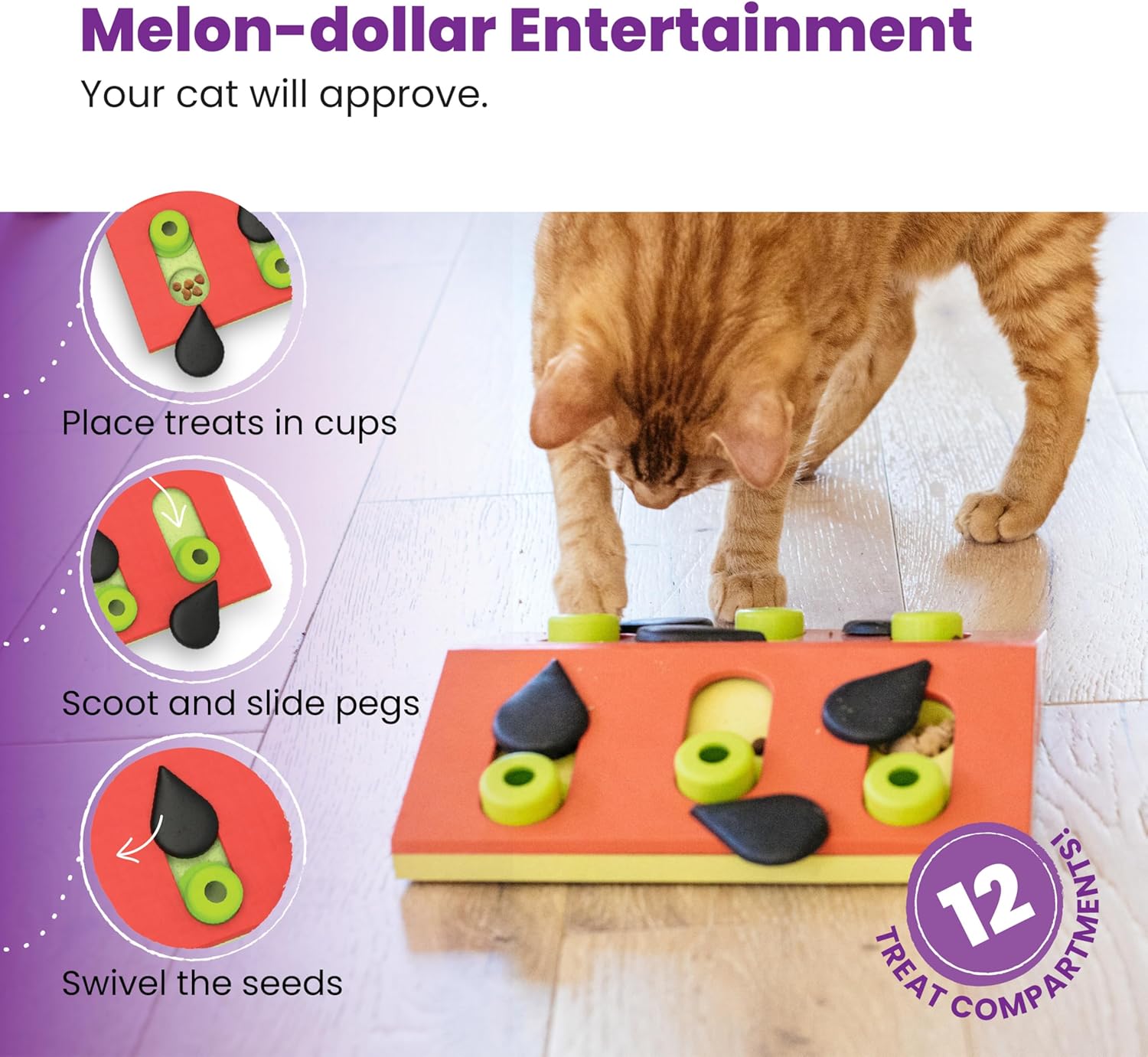
Key Features
Feeders that force the cat to work a bit to get their food: pushing, sliding pieces, digging, etc. These extend feeding time & engage the brain.
Best For
Excellent for cats who are food motivated; helps with diet control and avoiding weight gain; good for calm play with purpose.
Things to Check
Some are plastic pieces which can break; difficulty level should match the cat so they don’t get frustrated; cleaning required.
How to Use & Maintain Toys to Maximise Their Value
- Introduce slowly: Some cats are cautious. Let them observe new toy, sniff it, then you move it to prompt interest.
- Rotate toys: Keep only 2-3 out at a time, store others. Swap every few days so old ones feel new again.
- Supervise certain toys: Especially motorised ones or toys with small parts (batteries, strings). Don’t leave dangerous ones unsupervised.
- Keep things clean: Wash toy surfaces, remove debris, check for damage. Dirty, broken toys are a hazard.
- Use treats sparingly: For puzzle feeders, avoid overfeeding; ensure treats are healthy.
- Pay attention to signals: If toy stresses the cat (tail flicking, avoidance, ears back), switch to gentler options.
Common Mistakes & How to Avoid Them
| Mistake | What Happens | How to Avoid |
|---|---|---|
| Picking toys based on looks only | The toy may not engage the cat’s instincts; ends up unused | Consider movement, texture, sound, prey resemblance rather than aesthetic appeal |
| Too stimulating / overwhelming | Over-stimulation or fear; might lead to hiding rather than playing | Start with simple toys; build up; observe response |
| Letting toys degrade | Broken parts could be swallowed; loss of motion or function reduces interest | Regular inspection; discard damaged; replace parts if possible |
| Variety neglected | Cat gets bored with the same toy | Rotate; offer different play styles (puzzle, chase, interactive ownership) |
| Ignoring space and environment | Toy may not work (e.g. rolling ball stuck under furniture) | Consider floor type; clearance space; free movement area |
FAQs
- How much playtime does my cat need with interactive cat toys?
Even 5-10 minutes, 2-3 times a day can help. Quality over quantity; multiple short sessions typically work better than one long session. - Will interactive toys replace human interaction?
No. Interactive toys enhance your cat’s daily stimulation but can’t replace the emotional benefits of play with their owner. Cats benefit from bonding through interactive play (e.g. wand games, chasing games together). - Are motorised toys safe for kittens?
Generally yes, if they’re the right size, with safe battery compartments, no choking hazards. Always supervise first and check age recommendations. - Can puzzle feeders help overweight cats?
Yes, they help your cat eat more slowly, think while playing, and stay active. Just remember, a healthy diet and vet check still matter. - What if my cat doesn’t seem interested?
Try different types of movement, textures, sounds. Sometimes rotating old toys back makes them seem new. Also try scents like catnip (if your cat is responsive). Observe what triggers play. - How do I clean interactive toys?
Remove batteries/electronics before cleaning; use pet-safe soap for washable parts; wipe down motorised parts carefully; let thoroughly dry before use.
Conclusion & Key Takeaways
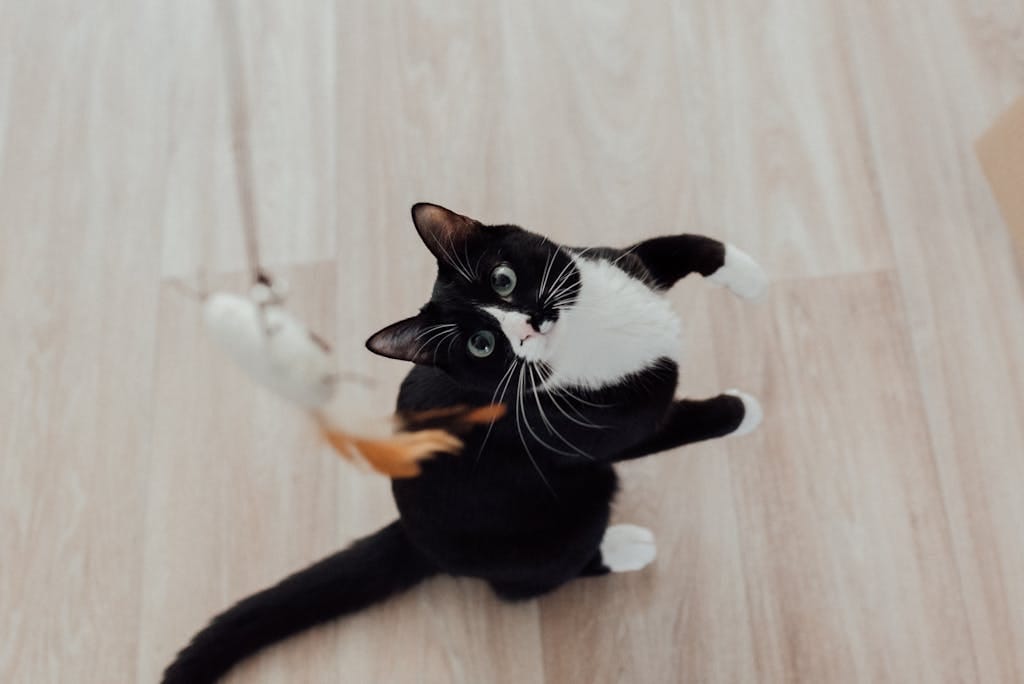
Key Takeaways:
- Interactive toys are not just fun—they’re essential for indoor cats’ mental & physical health.
- Choose toys that match your cat’s personality, energy, and safety needs.
- Five Amazon-quality picks above cover a range of play styles: chase, puzzle, solo play, etc.
- Rotate toys, supervise as needed, keep them clean and in good repair.
If you’re ready, try picking just one interactive toy from the list, introduce it slowly, see how your cat responds. You’ll quickly see what kind of play your cat prefers. Observe it and then you can build from there. Happy playing, and enjoy getting to know your cat’s playful side!

